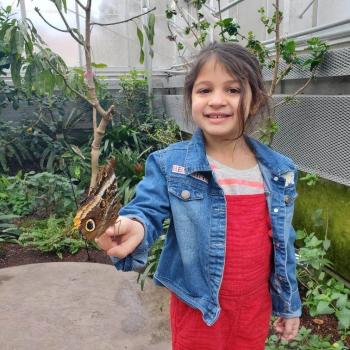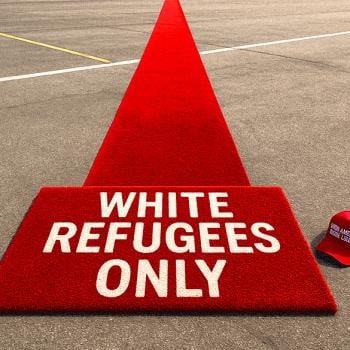Any woman may learn the principles of sacrifice in order to evolve, though we do not need to associate ourselves with self-immolation through a male hero motivated by themes of self-glorification and immortality on the manifest plane, the true mystery of Christ is not to be found on the tree.
The Clan teaches through practice "with the sacred tenets of Truth, Beauty and Love." Could you expand on these sacred tenets and how people might implement them in their own practice?
This question is linked intrinsically to one previously asked. The Mythos of a people is its people and while the Egregore must evolve through growth of awareness and the mediating perceptions of an ever-increasing spiritual alignment, change must become a natural development of that unconsciously. Conscious change is rooted in subjectivity, human frailty, desire, etc., and therefore manipulated against the Truth to which the Egregore must remain bound. Beauty and Love are the two other elements of the Mysteries by which we attain epiphanic gnosis. As individuals, the links are forged through the cumulative experiences of ancestral souls through whom the Mythos has served as a vehicle for their evolution within the Mysteries.
We may change form, style, praxes, etc., but not the core, which is the Egregore itself! We may change our perceptions and our approach, how we teach, etc., but the Luciferian premise, the gnostic principalities of the Clan must remain. It is this Truth that shines as a beacon, it is what people recognize, it is what they feel when introduced to it; it is a true tradition. We are a people not of a book, not of a land, but of a particular ancestry. Our history is complex; our spirituality is not.
History and myth combine to weave a pattern that determines a group identity. Our spirit is a collective that has evolved from this origin. We, like many others, traverse a mythic landscape and engage in metaphor, but this is of little use to anyone not engaged in our Mysteries under the Tutelage of that deity. Yet if the Mysteries do not engage in the history of its adherents then how are its descendants to evolve in Truth? There can be no validation of context if the context cannot be traced laterally, mythically, and retrospectively. Triangulation plots the course of Truth.
A glance at the contents of Tubelo's Green Fire shows no mention of spells and charms. Of course, your book is not a ‘how to' or a ‘Witchcraft 101' course, yet Evan John Jones' book Witchcraft: A Tradition Renewed makes it clear that magic is a part of the Clan. What role does magic play in the Clan and how do you feel it should be used? The preface to your book makes mention several times of poetry and poetic insight. I'm sure that many people will think of poetry in terms of what is written in The Wiccan Rede: "To bind the spell every time, let the spell be spake in rhyme." What do you understand by poetry and what is its role in Traditional Craft?
A sacred bond is forged between mentor and student, somewhat more akin to the eastern schools, where students offer fealty and un-avowed loyalty to their Masters. These Masters may teach one-to-one by oral transmission. Some written material has survived the passage of time, and this is zealously guarded in most, but sadly not all, cases. Poetry and myth, taught through allegory and experience were, then as now, the vehicles by which the sacred Mysteries are revealed. As such they are without structure, subject only to the requisite needs and spontaneity of each student. Lessons are often impromptu and conducted without ceremony.
Traditional Craft as a practicing arte is neither pagan nor religious. But it often incorporates spiritual aspirations. Religion is one of humanity's essential traits that distinguish us from the animal kingdom. We are self-aware and we are aware of deity. Paganism as a reference to divinity is man's natural state; all belief and magical practice evolves from this fundamental premise. Atheism is not a natural state. Cults are by their nature sectarian; religion is not. Therefore it is perception and not belief that divides us. Perception then separates us not only from the rest of humanity as individuals, but from deity.
Mysticism is the driving force within diverse religions that recognizes this impediment and that seeks to elevate its adherents beyond these self-inflicted boundaries. Truth is above all doctrine, and the Word is received by everyone with ears to hear it. Whether belief takes root in spirituality or religion, it is bound by magical praxes and indulged by the individual practitioner. Mysticism remains the driving force toward Truth. And there is no religion higher than Truth. Magic is practiced within and without religion and within and without the Craft. In fact the essence of all true religion is magic. In magical terms the Priest and the Magus are One.




